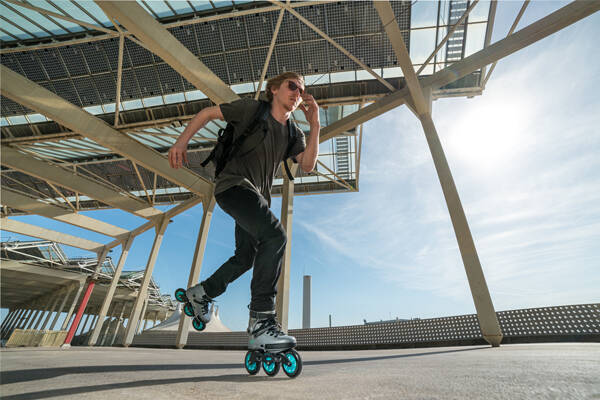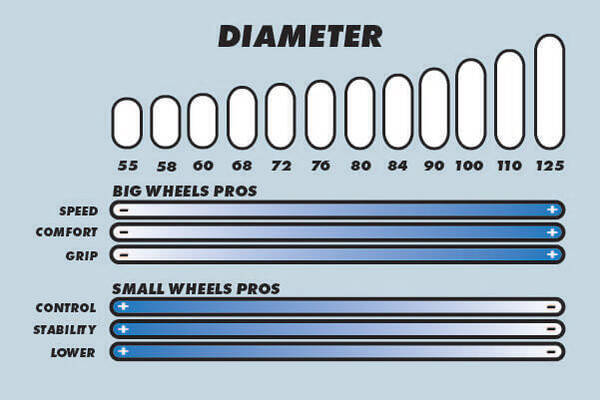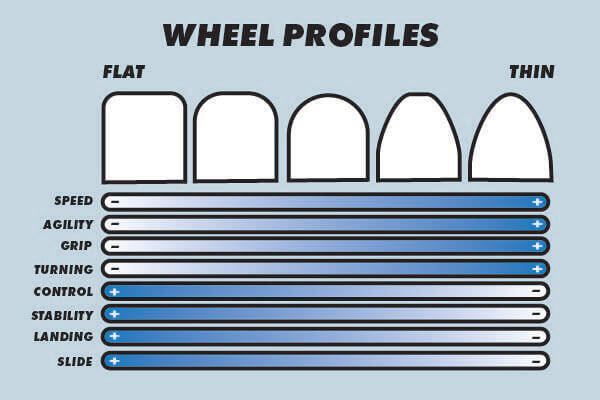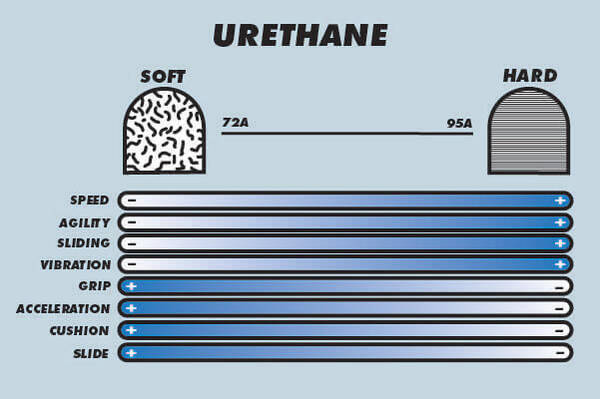How to choose your skate wheels
Skating, or blading, has been making a significant comeback recently. Over time, wheel types have increased and evolved substantially. Here’s how to select among the various shapes, sizes, and materials.

1. Diameter
On the market, wheels range from 55 mm to 125 mm. Each size has its benefits and drawbacks. Larger wheels typically offer more speed, comfort, and grip, while smaller wheels are favored for better control and stability.

It is crucial to ensure that the new wheels you choose are compatible with your frame setup.
2. Profile
Another factor to consider is the shape of the wheels, or their profile. Depending on the profile, your skates will serve different purposes. Flatter wheels provide more stability and control, whereas thinner wheels allow for faster rolling.

Note! Avoid mixing wheels with different profiles, as this can result in a skate that is difficult to balance and roll straight.
3. Material
Skate wheels are made from urethane, and its quality and concentration may vary. This affects whether they are soft or hard, indicated by a number between 75 and 100(110) followed by the letter "A".

Softer wheels have a lower number, while harder wheels have a higher number. The quality of the wheel and its material significantly impact the riding experience, so it’s something you should pay close attention to.
4. Wheel Hub
The hub is the "rim" of your wheels. Similar to cars, a smaller hub makes the wheel more comfortable and grippy. However, this also means less speed and more weight.

The design of the hub also affects the wheels’ performance. A more solid, disk-like hub provides more responsiveness and support for the load, but it will also be more affected by vibrations.
